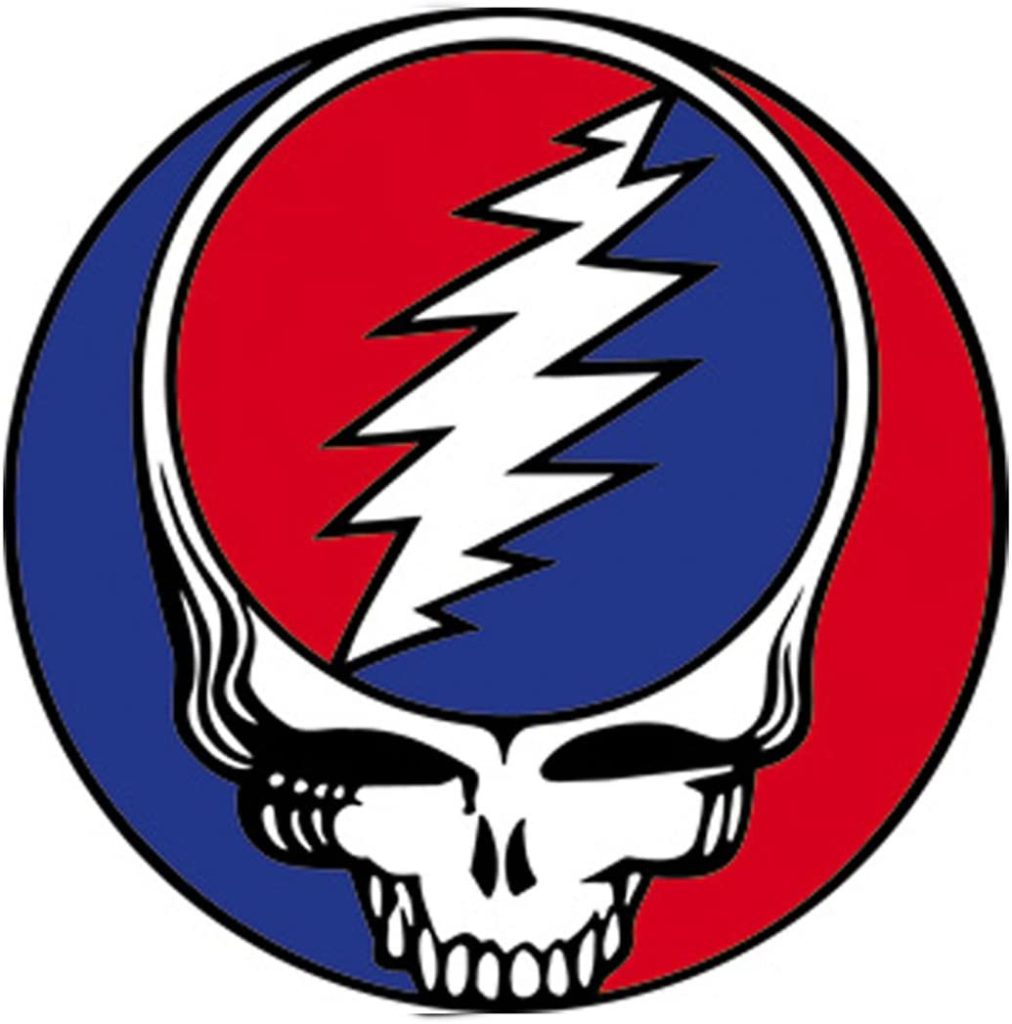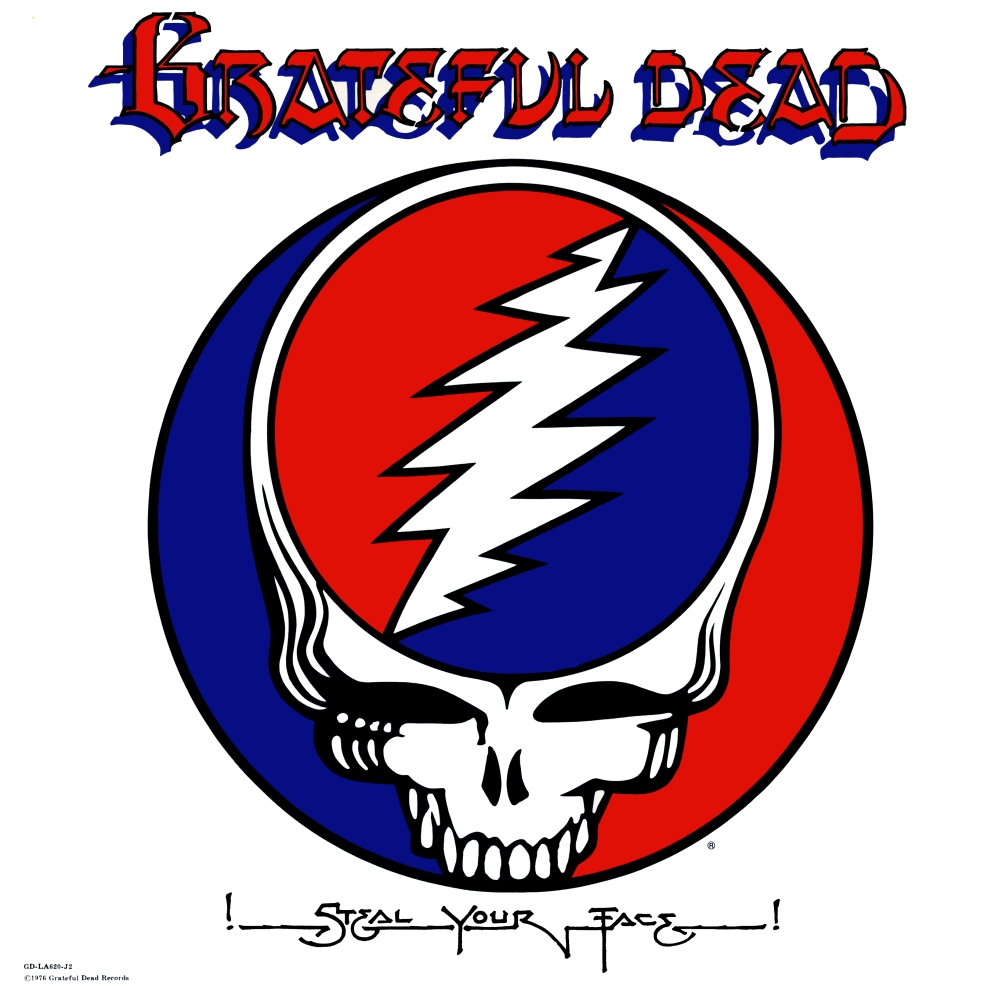The Story Behind the Grateful Dead “Steal Your Face” Logo

Much like the Grateful Dead bears, the iconic “Steal Your Face” logo is one that both Deadheads and non-fans of the band are familiar with at this point.
According to the official website of the late Owsley “Bear” Stanley, the Grateful Dead skull and lightning bolt symbol was first designed out of necessity way back in 1969, right near the beginning of their long, strange, trip.
Designing the Original “Stealie”
It started because the band needed a way to easily identify their road cases while out on tour or playing festival-style events with other bands.
The initial idea was to use a lightning bolt as the dividing line between the red and blue half of a circle, because apparently he thought it would look cool, though some speculate that the lightning bolt has something to do with LSD.
Anyway, Bear made a stencil with his circle and lightning bolt design and showed it to artist Bob Thomas (who also designed the dancing bears).
Bob elaborated on Stanley’s initial design and came up with the “Steal Your Face” skull and lightning bolt that has become so famous over the years.
The band stenciled the design on their road cases and used it in their album cover art and soon it became engrained in the culture surrounding the Grateful Dead.
At first, though, the skull and lightning bolt symbol was not referred to as the “Steal Your Face” logo or as some call it a “Stealie”. It was just the Grateful Dead logo.
Origins of “Steal Your Face”
Later, (on 4/17/72, to be precise) the band introduced the song “He’s Gone”, which includes the line “Steal your face right off your head”.
The lyrics actually refer to the father of drummer Mickey Hart, who had served as the band’s manager but stole a bunch of money and left, but it was soon taken to have another layer of meaning by the fans.
In June 1976, the Grateful Dead released a double album titled Steal Your Face, which features the iconic logo front and center on the album’s cover. Thus officially connecting the logo to the phrase.
Steal Your Face features recordings from October 17-20, 1974 to close out the final tour before the band’s touring hiatus in 1975. These shows were also the focus of the Grateful Dead Movie, released in 1977.

The logo had already been a part of the band’s culture by that point, and had in fact already been used on official artwork in the past (Bear’s Choice Vol. 1, which also features the dancing bears), but the release of Steal Your Face! was perhaps the first time fans ever called it the “Steal Your Face” logo or “Stealie”.
Deadheads also took the “steal your face” lyric and album title and applied it to having your “face stolen” by the music, meaning that the Grateful Dead (and specifically, Jerry Garcia), are blowing your mind with their improvisational jams.
By association and increased performances of “He’s Gone”, the Grateful Dead’s skull and lightning bolt logo took on the meaning of Steal Your Face, and the symbol became synonymous with the phrase.
Today the logo is all over the place, and in some towns you’re likely to see at least one a day, usually pasted on a tie-dye shirt or in the form of a bumper sticker on somebody’s Subaru. Now you know where it came from.
Enjoy a ripping performance of “He’s Gone” from 5/6/81 at Nassau Coliseum below.